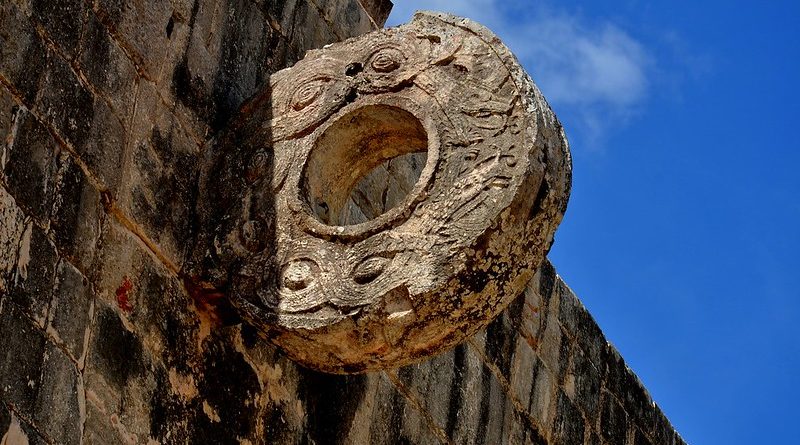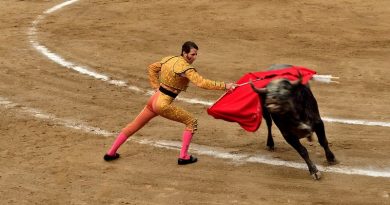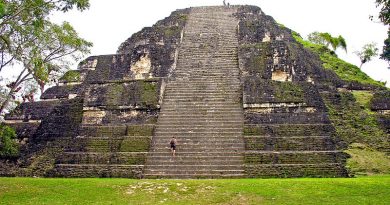The Ruins of Chichén Itzá
History Facts
Where: Yucatan Peninsular, Mexico
When: 7 – 10th century
History: Fuses Toltic and Mayan traditions
Highlights: Pyramid of slivering snakes, ancient ball courts and wells
At a time when Europe was languishing in the Dark Ages, the Mayan culture was thriving in the jungles of Mexico and Guatemala. Without the use of metal tools, the wheel or beasts of burden, the Mayans cleared away huge areas of jungle and constructed canals, roads and giant temples. They were masters of mathematics, developed a writing system all of their own and studied astronomy. The vast city of Chichén Itzá was the nerve centre of this remarkable civilisation, and it dominated the Yucatan Peninsular until the 13th century. Today it’s the best preserved of all the Mayan sites.
What’s the history here?
Although archaeologists have analysed the ruins of Chichén Itzá for decades, it’s history remains largely enshrouded in mystery and legend. A large Mayan community inhabited the site between 700 and 900 AD, and most of the buildings in the south of the city date from this period. Interestingly, the structures at the centre indicate that the architectural style was influenced by the Toltic traditions from Central Mexico.
The reasons for this architectural anomaly remain unclear. One school of thought maintains that the Toltecs invaded Chichén Itza, while others believe that the Mayans may have been influenced by Toltec traditions during the course of trading expeditions.
Ancient legends passed down through the Mayan and Toltec tribes may give us a clue to the relationship between the Toltec and the Mayans. While the Toltecs related that Quetzalcóatl,their ruler, was expelled from his kingdom in 987AD and floated away on a raft of snakes, the Mayans asserted that the same year Kukulkán the Serpent God arrived on Mayan shores, conquered the city and took Chichén Itzá for his own. A strange co-incidence or tales based on history? Perhaps we’ll never know.
The real reasons for the sudden decline of the most sophisticated civilisation in mesoamerica remain unclear, but by the end of the end of the 10th century AD Chichén Itzá had been completely abandoned an left to the ravages of the encroaching jungle.
What’s there to see and do?
The ruins of Chichén Itzá can be visited in a day trip from either Cancún or Mérida, but you do need a couple of days to explore the site properly. It’s a 2 or 3 hour coach journey from either city, but by mid-morning the site becomes extremely crowded, so it’s a good idea to arrive as early as possible.
Highlights of the site include:
The Pyramid of Kukulkán is a staggering 79 feet (24 m) high. Each side had a total of 91 steps, which if you include the platform at the top makes 365 – one step for every day of the year. On the spring and autumn equinox the sun’s shadow in the steps of the pyramid gives the illusion of a snake slithering down the structure. It’s an impressive sight which is witnessed by thousands every year.
The Ball Court was the largest arena in all the Mayan cities 40 ft long by 25 ft wide. The game they played here involved two teams, who hit the ball with their elbows, hips or wrists. The aim was to score a goal by aiming the ball through one of the 20 ft high hoops attached to the wall of the court. The carvings on the walls of the court indicate that this was no ordinary sports match: The captain of the losing team was decapitated, perhaps as a human sacrifice to one of the Mayan gods.
The Cenote is a well-like hole, which leads down to an underwater river. This was the Mayan’s main source of water and had certain religious significance attached. The remains of children have been found in the cenote, prompting some to claim that this was a place of human sacrifice.
The Caracol is also known as the Observatory. It was from here that the Mayans studied astronomy and mapped the heavens.
MORE INFORMATION
Books
In the Museum of Maya Culture : Touring Chichen Itza, Quetzil Castaneda; University of Minnesota Press, 1996
Different World – Chichén Itzá
Informative introduction to the highlights of a visit to Chichén Itzá.




